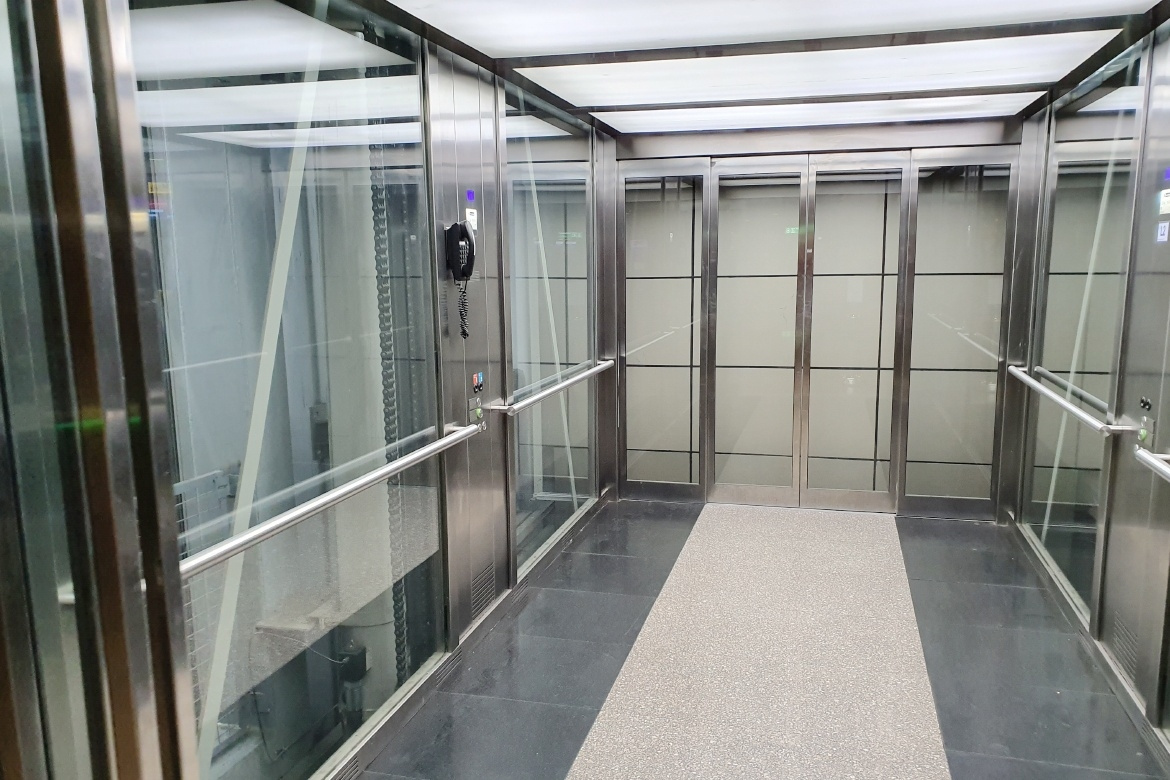- Quem Somos
- Produtos
- Acesso a Clientes
- Notícias
- Contato
- Ecommerce
- Marketing e Vendas:
+34 954 514 500
sales@hidral.com
This website uses its own and third-party cookies to improve our services and collect information about your browsing. If you click "accept" or continue browsing, we will consider that you accept the use and installation of your device or device. You will find more information in our Política de cookies.
06/06/22

Requirements to install a commercial lift
The type of lift to install depends on your budget, requirements and space, so in Hidral we offer you a wide selection of commercial lifts to satisfy all your needs.
to suit all needs. When looking at the lifts available, the first thing to consider is the dimensions of the lift shaft. Our team is on hand to provide customers with assistance in determining the dimensions of the commercial lift that would best suit their business.
A lift that is used in a public space is known as a commercial lift. These lifts for commercial buildings can take many forms, including passenger lifts designed to blend in with the surroundings and transport people from floor to floor, freight lifts, which are designed to transport cargo and heavy loads, and service lifts, which can transport both passengers and freight, depending on the need.
The following steps must be taken for the successful installation of a commercial lift:
- Make an analysis of the usage needs.
- Search for the design and selection of the model that best suits our needs.
- Evaluate the physical needs in the building or commercial premises.
- Proceed with the construction or modifications to the structure.
Our team of qualified professionals can streamline this whole process to ensure you get an excellent result.
A brief description of each of the types of commercial lifts will help you understand the investment involved in commercial lifts. Most lifts are either passenger or freight elevators. They are either hydraulic, traction or machine room-less lifts.
This is one of the simplest types of lifts. Its operation is achieved by means of a hydraulic escalator, which has a piston underneath that pushes it upwards when necessary. This piston is driven by an electric motor that pushes hydraulic fluid (oil) into the piston. When the lift needs to go down, the piston releases some of the oil through a valve. This type of lift is used regularly, especially for buildings with not much height compared to other types of lifts. It is not recommended for buildings with more than eight storeys.
This type of lift is most commonly used in medium and high rise buildings. They have a faster speed compared to hydraulic lifts, which means they will get you from point A to point B in less time. This type of lift is set in motion by an electric motor that moves cables or ropes that pull the escalator upwards. The machine room is located at the top of the lift and activates the electric motor.
The operation of a traction hoist is similar to a pulley system that moves cables through a wheel. The cables and gear system should be checked periodically for wear and tear. As these components deteriorate, the lift may not be as efficient and may even be dangerous at some point. This type of lift is one of the earliest lift designs and also one of the strongest.
These lifts do not have a machine room, as the machinery is in the pit. The maintenance of these lifts is similar to that of traction lifts, but they achieve faster travel speeds. This is why machine-room-less lifts are becoming increasingly popular today. They help to move from one floor to another quickly and safely. They do not need a lot of energy, so it is more efficient for buildings to use them. These types of lifts can be traction or hydraulic, ideal for saving space.
This will depend on the size of the lift, the type and the building it will serve, the cost will range in different variants. It is best to contact our specialists to get an exact quote for the installation.
Structural and seismic aspects must be considered. It is vital to demonstrate compliance with seismic design requirements. By analysing these procedures you will be able to know what characteristics the commercial lift you want to install must have. Among the options, you have the different types mentioned above. Everything will depend on the space, as well as the needs you want to meet in order to comply with accessibility regulations.
The installation of a lift generally takes 3 to 5 days, but the installation time can be affected by the type of lift purchased, the lift shaft, the possible need for a machine room, the construction of additional components and testing procedures. Planning the installation of a lift may require several weeks or months.
If you have a business or commercial space, you will want to provide maximum comfort for visitors. Provide people with the convenience of a lift that increases productivity.